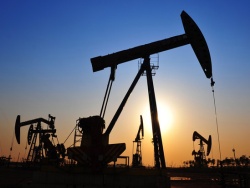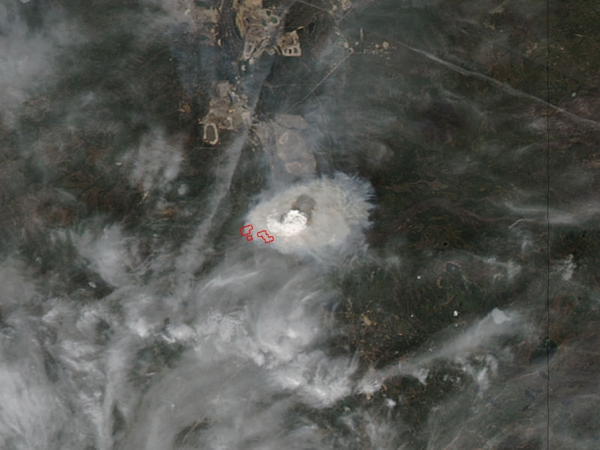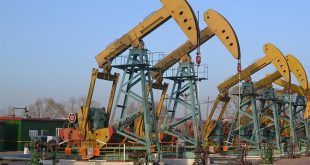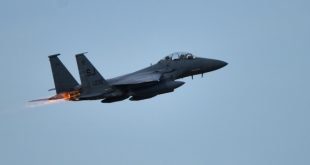
The price of Brent crude oil on Thursday reached $48 a barrel. Against the background of growing oil prices the International energy Agency issued a forecast that oil demand in 2016 will grow by 1.2 million barrels per day and will reach 95.9 per million barrels. However, according to the IEA, world production already exceeds this figure. The leaders of the oil market are ready to increase production. Russia still believes that the market will find its equilibrium.
Oil prices went up again on the news from Nigeria, where the accident occurred on the pipeline Bonny Light, which supplies its oil Shell. On Wednesday, the company declared force majeure and warned that because of the accident the supply of Nigerian oil will be reduced by approximately 78 thousand barrels per day. By the way, because of the constant attacks of radical groups in Nigeria have recently been reduced oil production (90 thousand barrels per day). On the news about the accident of oil has added more than 3% on Wednesday. On Thursday, prices continued to rise, and by 16.00 GMT on the Intercontinental exchange (ICE) in London a barrel of Brent was worth $48,00.
Recently, the barrel basically is teetering around $45, although occasional deviations occur in the $2-3 in both directions. Current prices — the result of a fall which began in July 2014 when a barrel of North sea Brent, which is tied to the price of Russian Urals has reached $110. Then oil became cheaper hard, low ($28) was recorded at the end of January 2016, after which the barrel went up.
Russia expects that the decline in investment in the oil sector caused by low prices, will lead to balancing the global oil market. On Tuesday said Russian Deputy Prime Minister Arkady Dvorkovich. According to him, the sharp drop of investment poses a serious threat to the oil market.
“But we are not talking about the return of prices to the old values”, he pointed out, Recalling that earlier the head of Ministry Alexander Novak talked about the price of a barrel around $50.
Canadian factor
After a meeting in Doha, Qatar, the April 17, when OPEC and producers outside the cartel failed to agree on freezing the level of oil production, Novak said that the balancing market will occur in mid-2017. If the agreement on fixing of the production of oil was reached, the market, according to the Russian Minister, has stabilized to three or four months earlier.
By the way, the President of OPEC, Minister of energy of Qatar Mohammed al-Sada on Tuesday said it expects a recovery in oil prices in the second half of this year. As reported by Bloomberg, al-Sada is linked with the reduction of oil supply, which is caused by closing high-cost plants that do not withstand low prices. The rate of closure, according to the Qatari Minister, is increasing. Also prices will affect the beginning of the driving season. However, to what levels can rise the price of a barrel, al-Sada said.
With regard to investments in the global oil industry, the Minister of natural resources of Russia Sergey Donskoy at the end of March said that last year in the whole world, they decreased by 22% and amounted to $600 billion, and this year is expected to fall another 12%, to $520 billion According to Alexander Novak, a reduction in investment 30 largest oil companies could reach $200 billion.
Just on Tuesday, the National statistical Agency of Canada reported that this year, canadian oil and mining companies would reduce investments by 23%, to $37.1 billion, due to falling prices for raw materials.
While canadian producers continue to lose production to 1 million barrels per day due to the ongoing forest fires in Alberta.
Main fundamental factors affecting oil prices is the excess of supply over demand in the world market. At the end of last year, according to estimates by the International energy Agency, it was about 3 million barrels per day (more than 3% of world production). Now the excess supply, according to various estimates, about 1-1. 5 million barrels a day. OPEC, for example, in its report for March says that global demand in this month was 94,18 million barrels per day, while supply — to 95, 68 million barrels.
Who will increase oil production
However, the world leaders in oil production is not only not going to cut production, but, on the contrary, intend to increase it.
So, the new Minister of energy of Saudi Arabia (in March, according to OPEC, the CA has produced 10.2 million barrels per day, i.e. more than 10% of the total world production) Khalid al-falih appointed to the post at the end of last week, immediately after his appointment said that the AA will adhere to the established policy in the oil sector. “We remain committed to maintaining our role in the international energy markets and strengthening our position as the most reliable supplier of energy in the world,” said al-falih, adding that Saudi Arabia seeks to meet both the existing and additional demand for oil.
The Saudis have announced their intention to increase production at the shaybah field. According to Bloomberg, it is expected to grow by 33% to achieve 1 million barrels per day. Earlier it was reported that this will be possible thanks to the modernization of production capacity, which is planned to be completed in may.
Even Nigeria, where production is now declining, plans in 2016 to increase production to 2.3–2.5 million barrels. On Tuesday said Nigerian oil Minister Emmanuel Cacique. According to OPEC, in March, the country extracted 1,677 million barrels per day,
Announces the increase in production and Kuwait. According to the Director of research of the Kuwaiti state-owned Kuwait Petroleum Abdulaziz al-Attar, we are talking about reaching the level of 4 million barrels per day (in March were extracted 3 million barrels). However, Kuwait plans to increase production gradually until 2020.
USA set a trend
Thus, if you start from March performance and plans for the above mentioned countries, the supply on the world market will grow in 2016 to approximately 1.35 million barrels per day (if to take for a basis that Kuwait will increase their production evenly over four years).
Demand growth is projected to be somewhat more modest. According to the CEO of Saudi Aramco Amin Nasser, in 2016 it will be only 1.2 million barrels per day. OPEC in its March report predicts 1.2 million barrels (50 thousand barrels lower than previously). That is, demand growth will lag behind growth in demand, despite the fact that it already above.
However, the International energy Agency on Thursday published fresh data reflecting the situation in April.
And according to the IEA, in April world production already amounted to 96.2 million barrels a day. And if OPEC increased its production by 330 thousand barrels, in countries outside the cartel, recorded a decline in production.
IEA also expects demand growth for the year at 1.2 million barrels per day. He will be with 95.9 million barrels, that is, in any case will be below even the current proposals.
UBS analyst Maxim Moshkov said the General trend of increasing production. “However, much will also depend on how the situation will develop in the United States,” — said the expert.
States with their shale projects that have the potential to freeze as rapid production and rapid recovery, have an impact on global production levels, and hence on prices. However, the major trend in America today is still to decline.
According to one of the world’s leading oilfield services company Baker Hughes, for the week ended may 6, the number of operating drilling rigs in the U.S. decreased by four units and amounted to 328 pieces. Compared to the same period last year, the rig count fell by 340 pieces (-50,9%). Production continues to fall, the eighth consecutive week. For the week that ended on 29 April (more recent data not yet published), it was $ 8,825 million barrels per day (-1,26%). Compared to the same period last year it decreased by about 0.5 million barrels per day.
Earlier, the energy information administration at the U.S. Department of energy predicted the average production in the country in 2016 at the level of 8.6 million barrels per day. The international energy Agency published a forecast that the production amount of 8.67 million barrels a day.
The June double
It is not excluded that by holding low prices, middle Eastern players are trying just to keep production in America. “In Saudi Arabia’s budget for 2016 includes the cost of oil at $29 per barrel — says the Chairman of the Board of Directors of Engineering company “2K” Ivan Andrievsky. — And today’s price level on oil exceeds this level”. However, as pointed out by the expert, the higher cost of oil will lead to the resumption of shale projects in the United States, and for Saudi Arabia it is unprofitable (American oil can result in the market of interest to the Saudis. — “Газета.Ru”).
“Thus, the price level of $40-50 per barrel the Kingdom interesting — it still does not allow to actively develop shale projects, but at the same time slows down the reduction of investment in traditional production, maintaining the balance of supply and demand in the market, — says Andrievskiy. — Perhaps that is the task to balance at this level of prices and is forcing Riyadh to make contradictory statements regarding oil production. Recall that it was Saudi Arabia along with Russia, Qatar and Venezuela originally initiated freeze proceedings.
Yet the chance remains that the world leaders of oil production will be able to agree on the freezing of production, which they failed to do in Doha on April 17. Then the stumbling block was Iran who did not want to fix the extraction, did not come on until the pre-sanctions levels of 4 million barrels per day. The Iranian delegation did not come to Qatar. Because the Iranians refused to freeze production and Saudi Arabia, which in the end actually interrupted the negotiations.
But last week, the Islamic Republic of Iran stated that the pre-sanctions level is reached and it is ready for freezing.
This issue could be raised at the next OPEC meeting, to be held June 2 in Vienna. However, the likelihood that oil producers will still be able to reach an agreement, small as the fight for market share continues and the players are interested in increasing their production.







